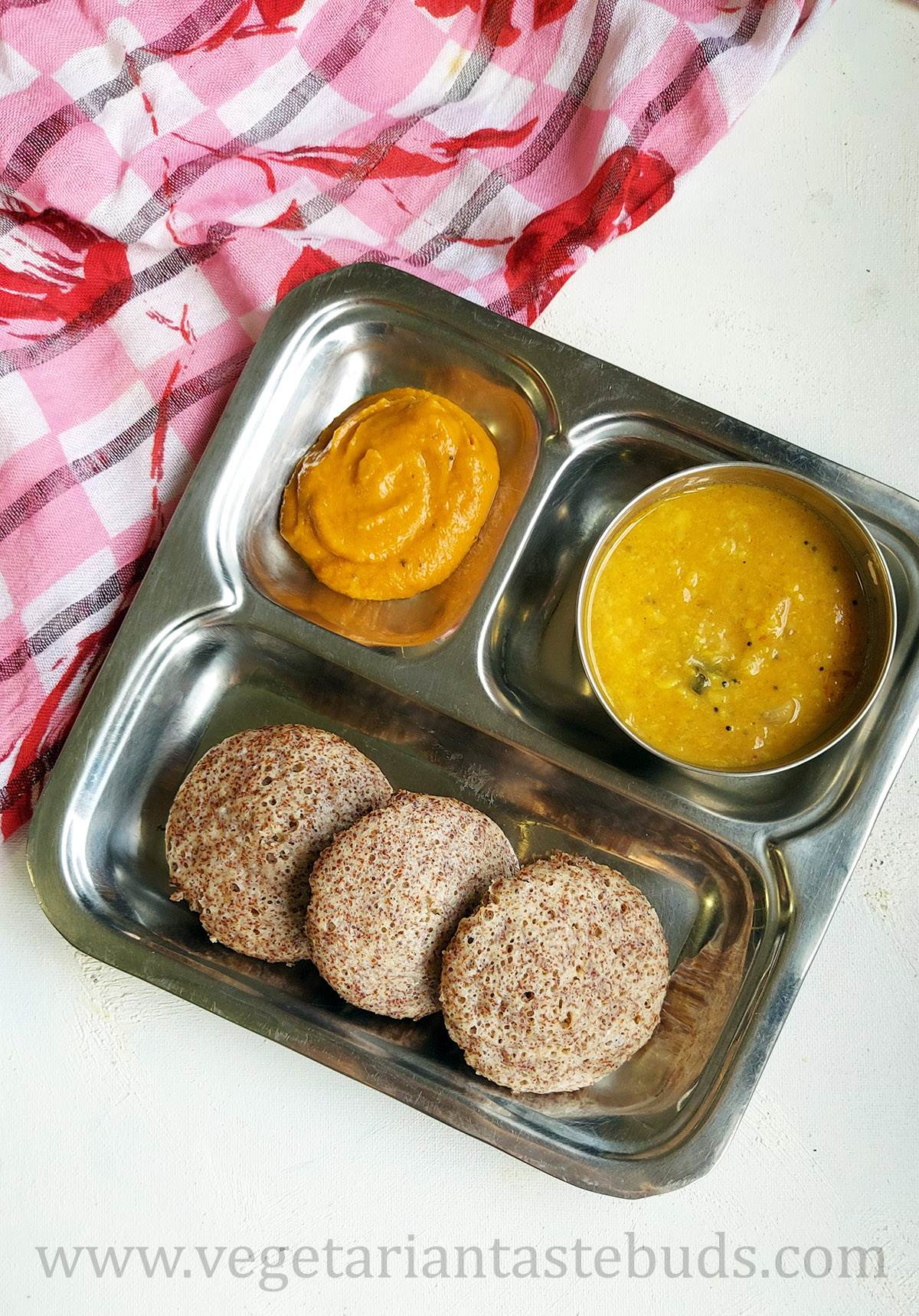
Idli needs no introduction. Ragi idli is a nutritious take on the much-loved delicacy from South India. It has the addition of the whole ragi. Also, we have used idli rava instead of idli rice in this finger millet idli recipe.
This ragi idli recipe without rice uses for whole ragi, idli rava and urad dal. Given the health benefits of ragi, these idlis automatically become a more nutritious option.
One thing to note is that idli rava differs from the regular rava (also known as semolina or sooji).
So let us first understand what exactly idli rava is.
What is Idli Rava?
Idli rava is also known as rice rava. The boiled rice is dried and ground into a semolina-like texture. Semolina is produced by grinding wheat into a coarser grain. So the main difference between idli rava and regular rava (sooji) is that the former is prepared from rice whereas the latter uses wheat.
Idli rava requires less soaking and grinding as compared to idli rice. Also, the batter prepared using idli rava is slightly coarse, as does the final product prepared using it – idli, dosa, or uttapam. Some even add the soaked idli rava into the batter without grinding.
Ragi Idli – Video Recipe
How to make Ragi Idli | Step-by-step Recipe
In a bowl, combine whole ragi and urad dal. Rinse them 4-5 times in water. Then pour water over it till they are completely soaked. Soak for at least 6 hours.
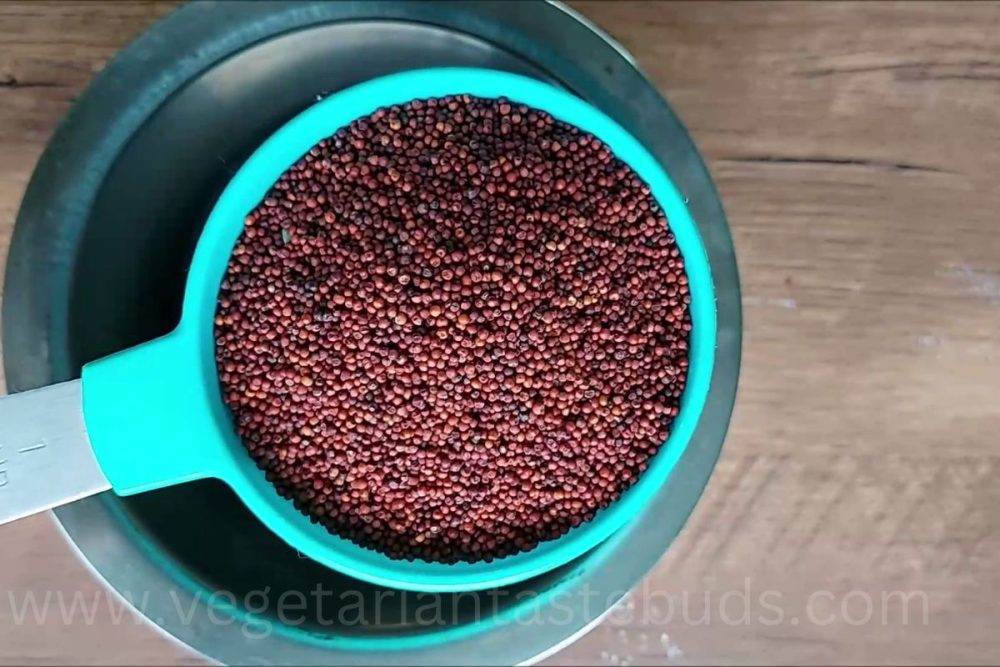
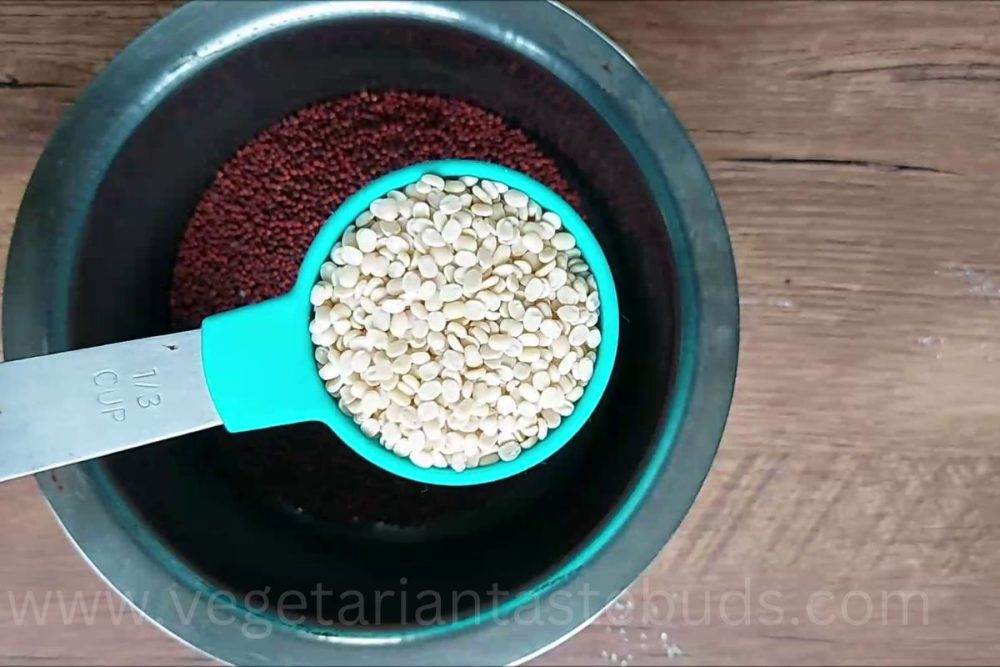
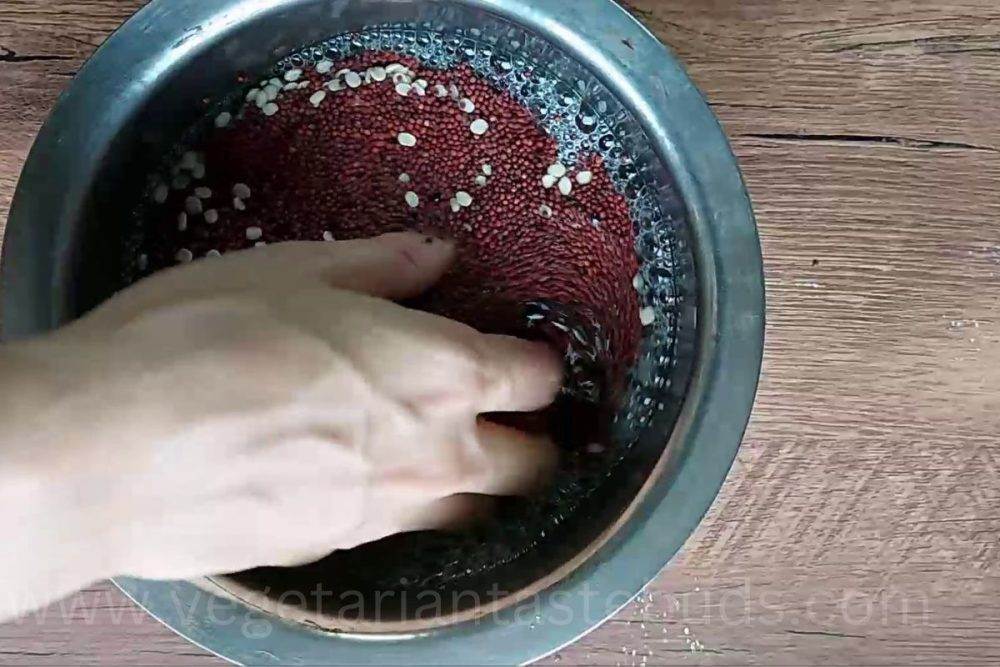
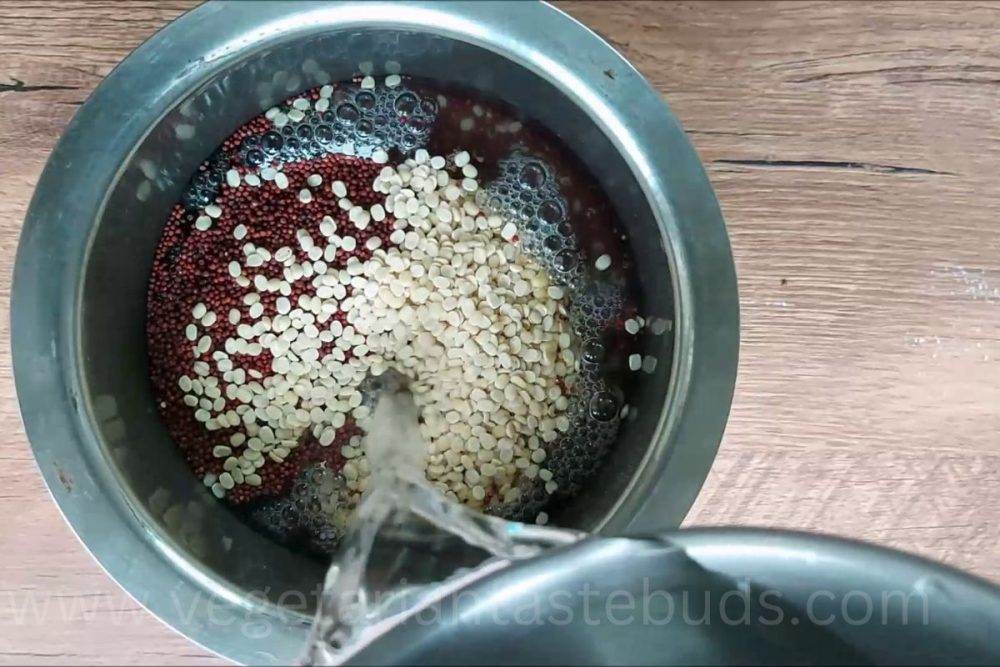
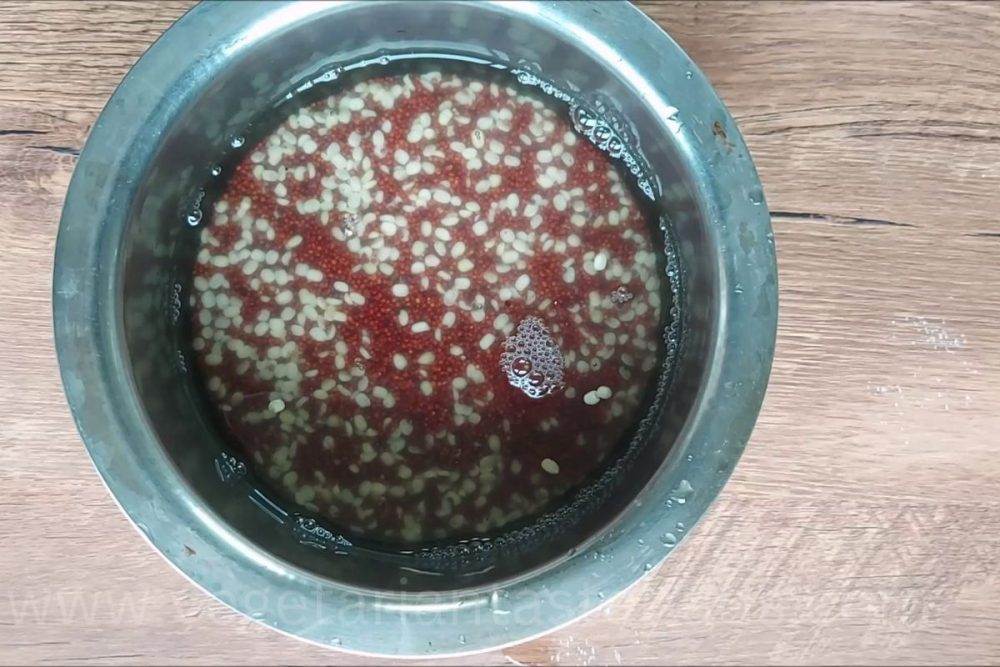
Take idli rava in a bowl. Rinse it a couple of times. To clean the idli rava, pour nearly double the water, stir and swirl with a hand, and drain the water. The water will become cloudy during the first 2-3 times.
Then pour water over it so idli rava is covered with water. Soak for 6 hours.
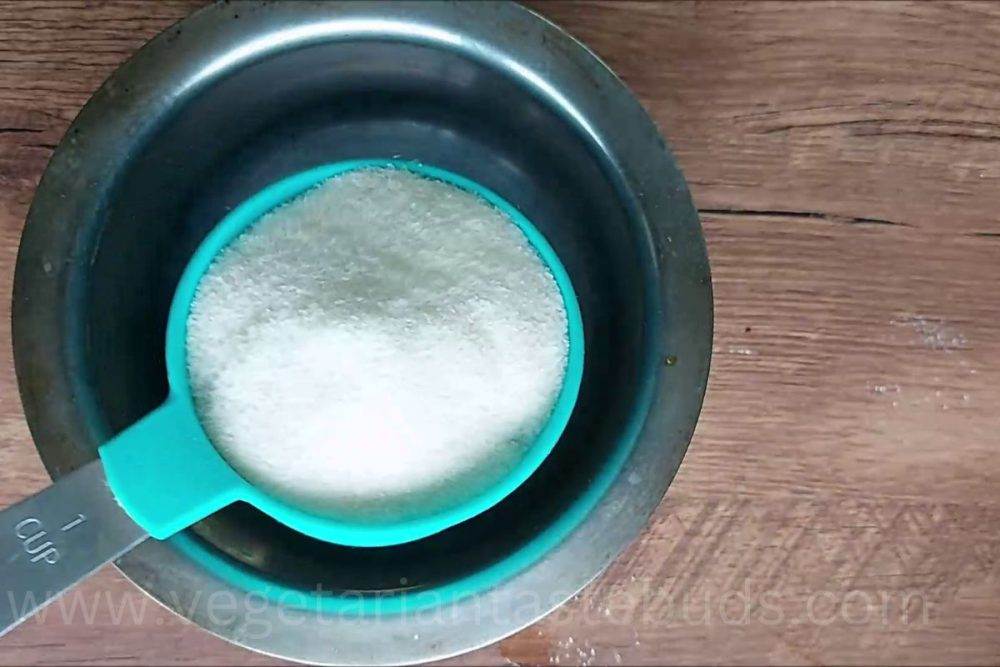
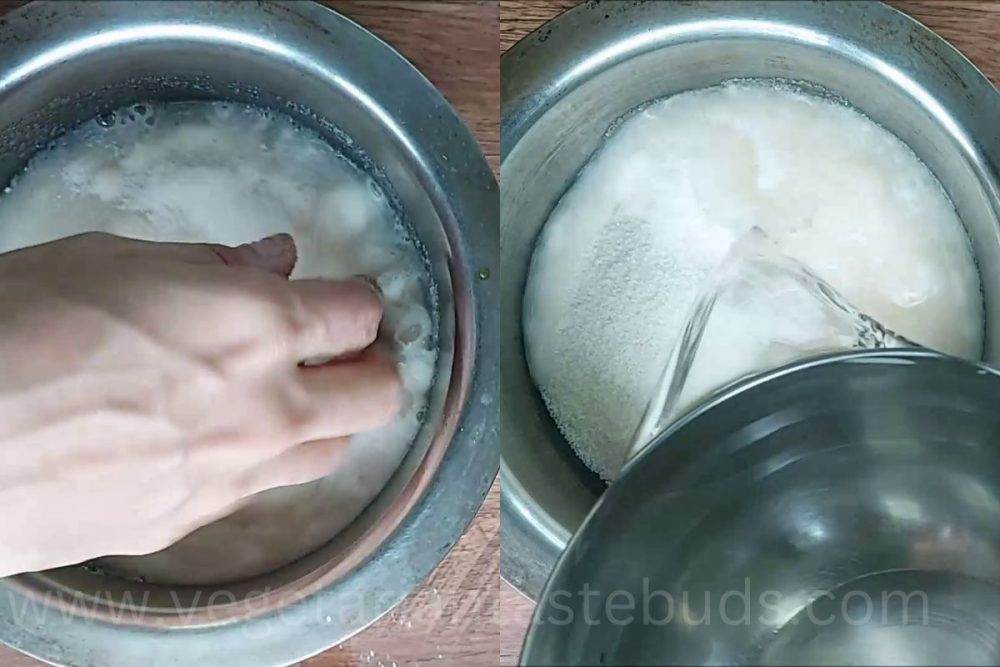
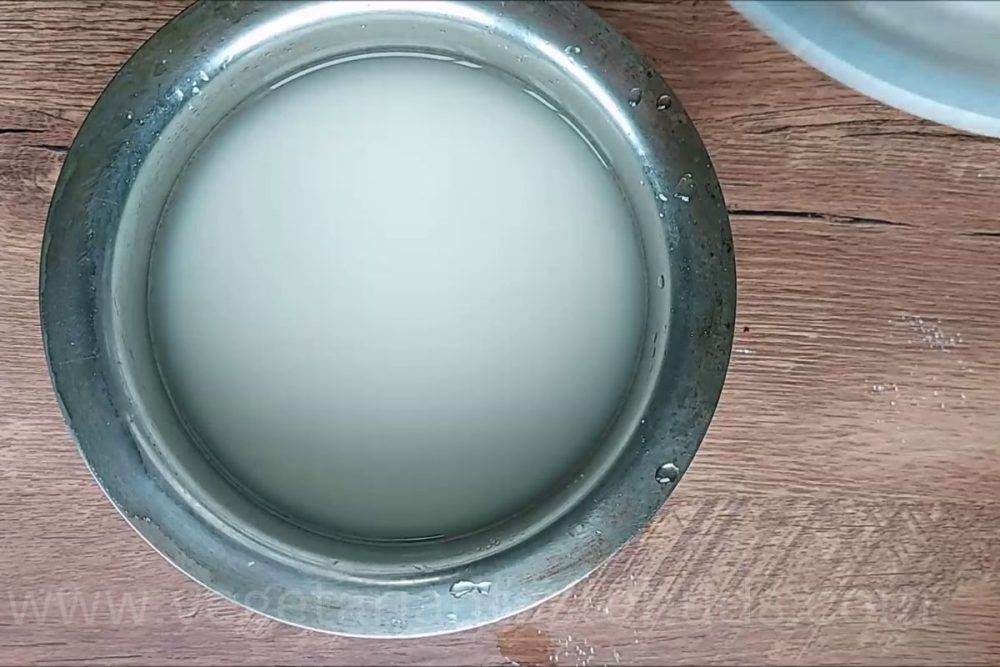
Drain the excess water from the ragi and urad dal after soaking. Take in a mixer grinder jar. If the quantity is more, you can grind in batches. Add little water while grinding. Do not add more water as idli rava batter will be thin.
Now take the smooth ragi+dal batter in a big vessel.
Remove excess water from the soaked idli rava. Squeeze it lightly with your hand and place it in the grinder jar. Blend it. This mixture will not be smooth. It will be slightly coarse. Do not add water while grinding idli rava. If required, add a little urad dal+ragi batter while grinding idli rava.
Pour the idli rava batter into the vessel containing ragi+urad dal batter. Mix well. Cover and let it ferment for 8-10 hours.
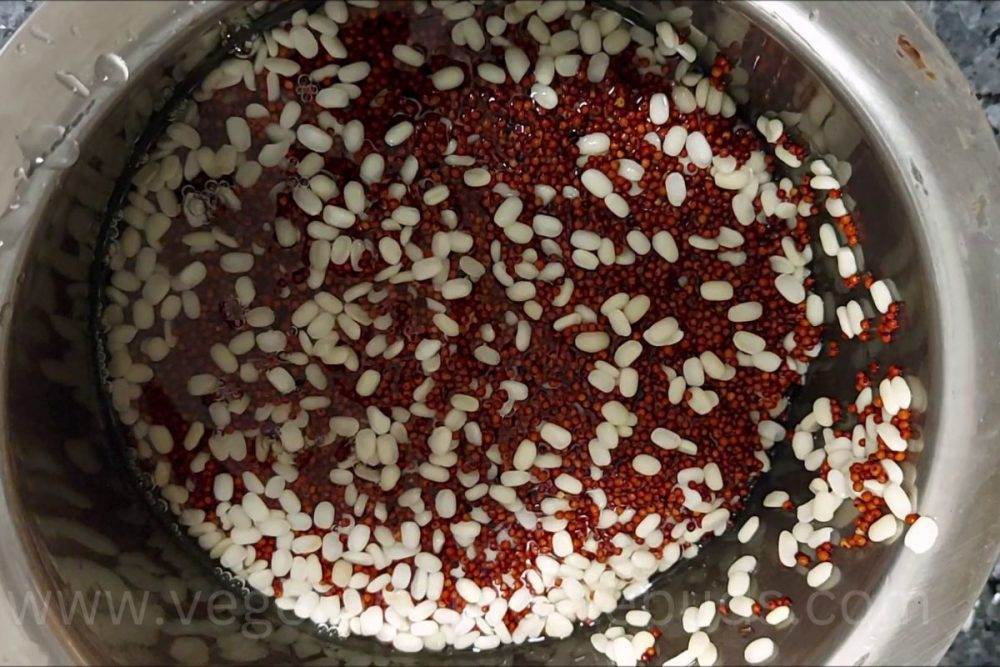
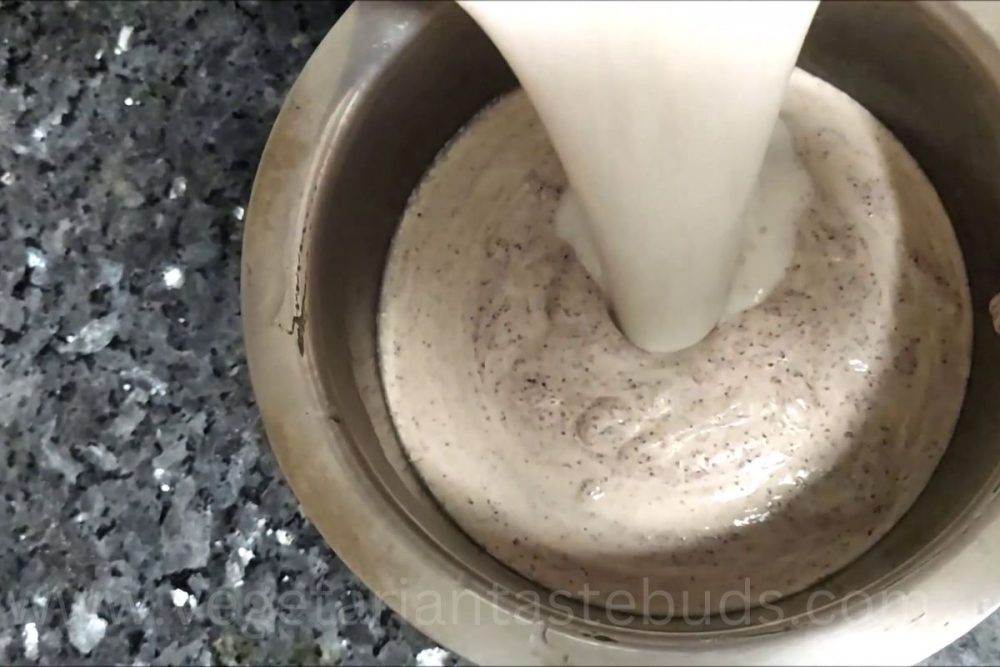
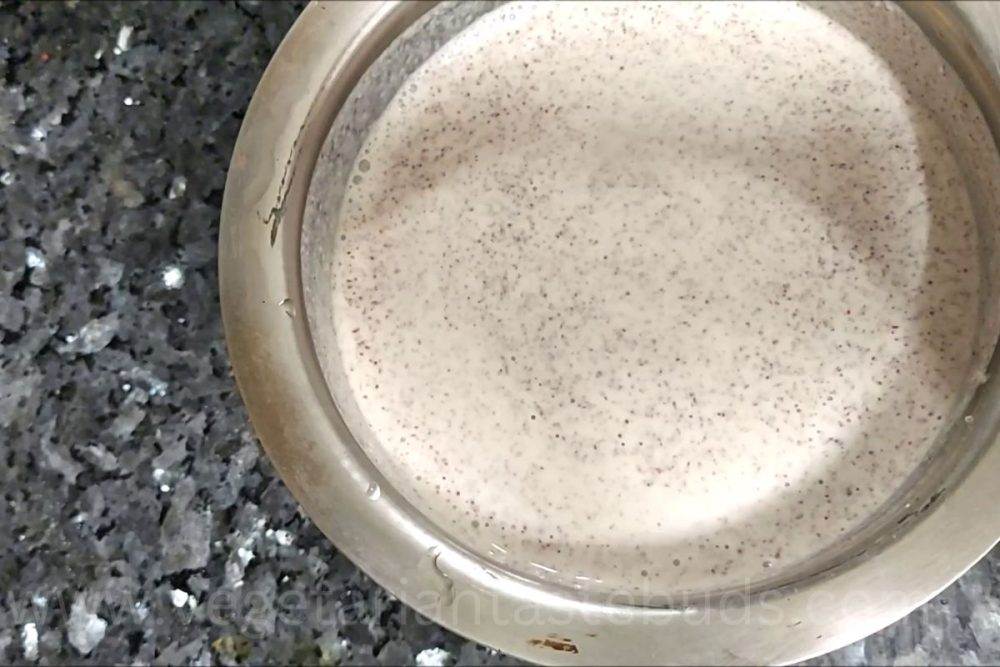
After fermentation, add salt and mix. If you don’t want to use the whole quantity, add salt to the required quantity of batter. You can place the remaining batter in the refrigerator.
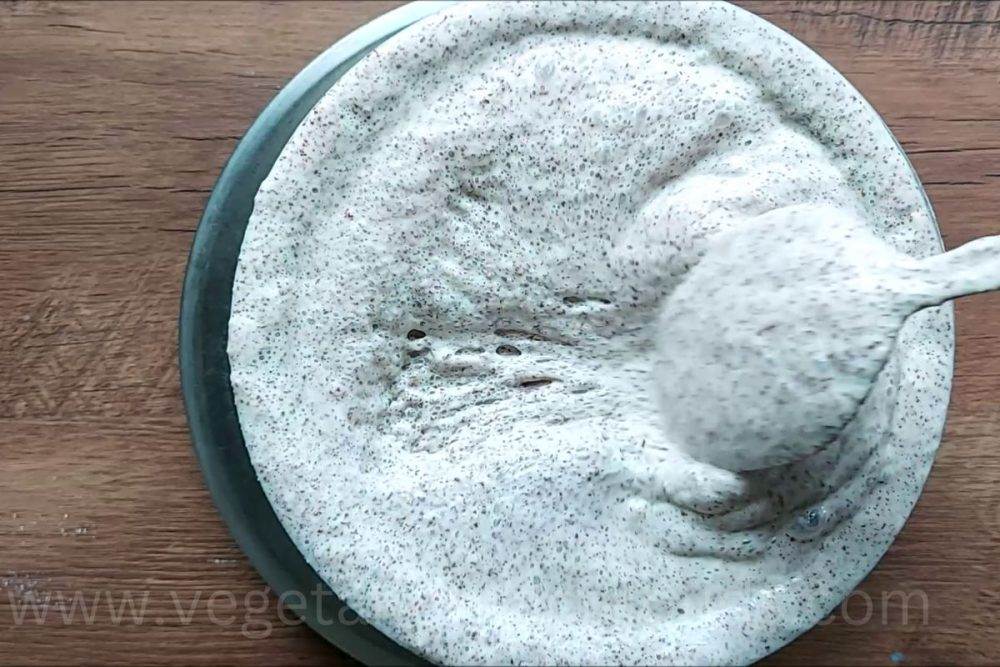
Pour water into a steamer and bring it to a boil. Grease the idli mould with oil, then fill it with batter.
Place the idli mould in the steamer and put the lid on it. Steam it for 10 minutes over medium heat. After 10 minutes, insert a knife or toothpick into a cooked idli and see if it comes out clean. If it does, the idli is done; if not, steam it for a few more minutes and try again.
Wait for 1-2 minutes before demoulding. Remove the idlis with the back of a spoon.
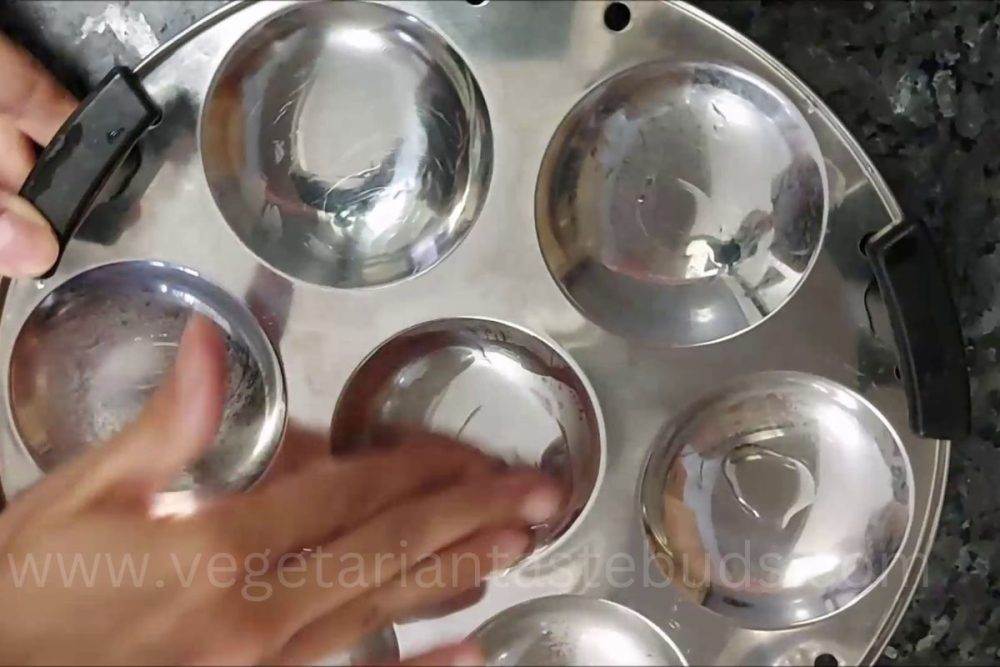
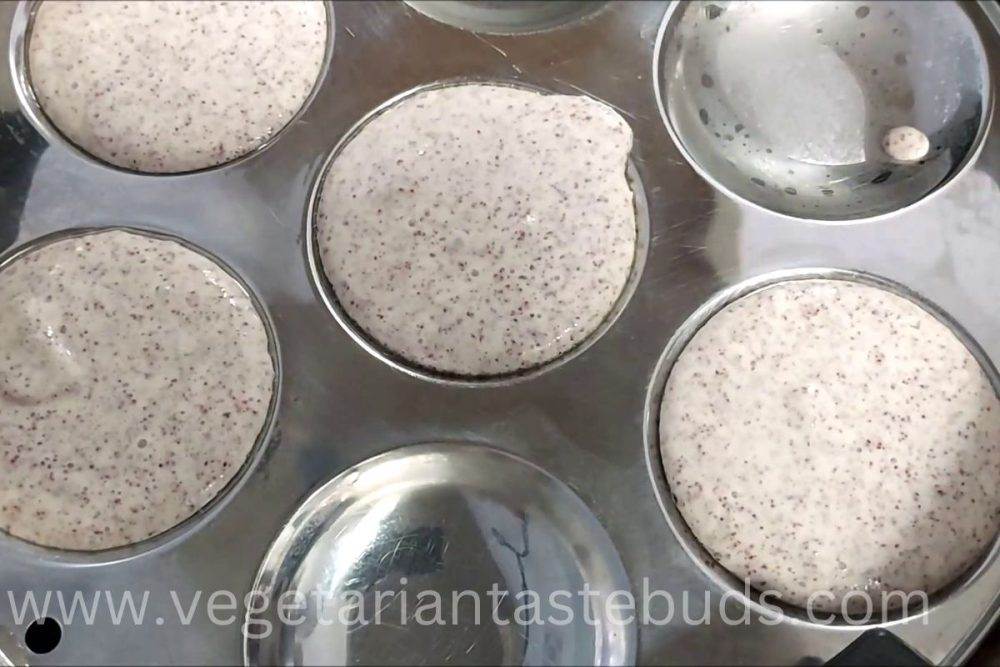
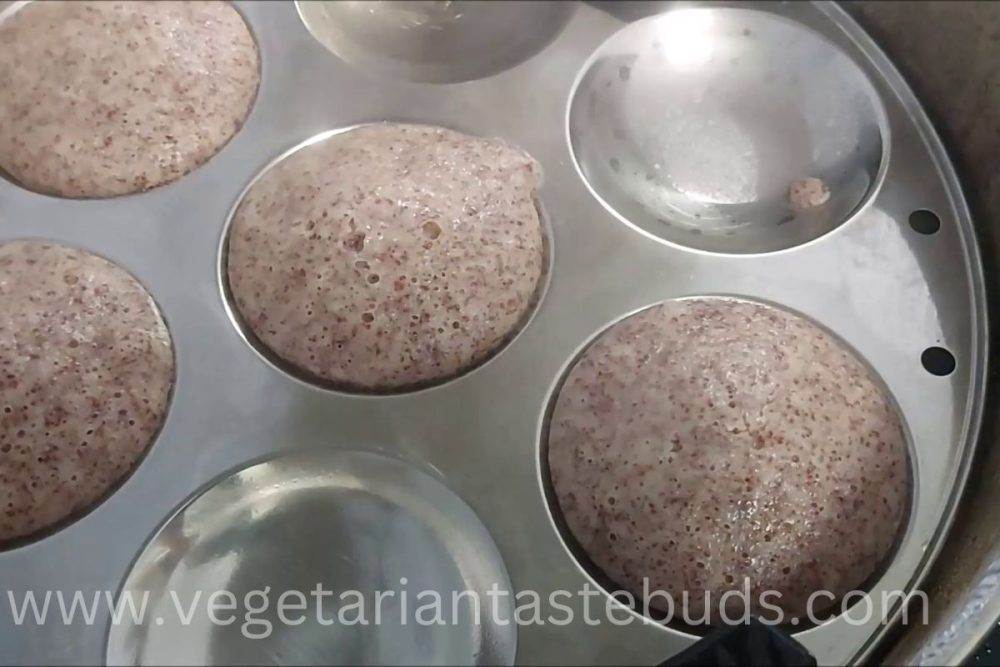
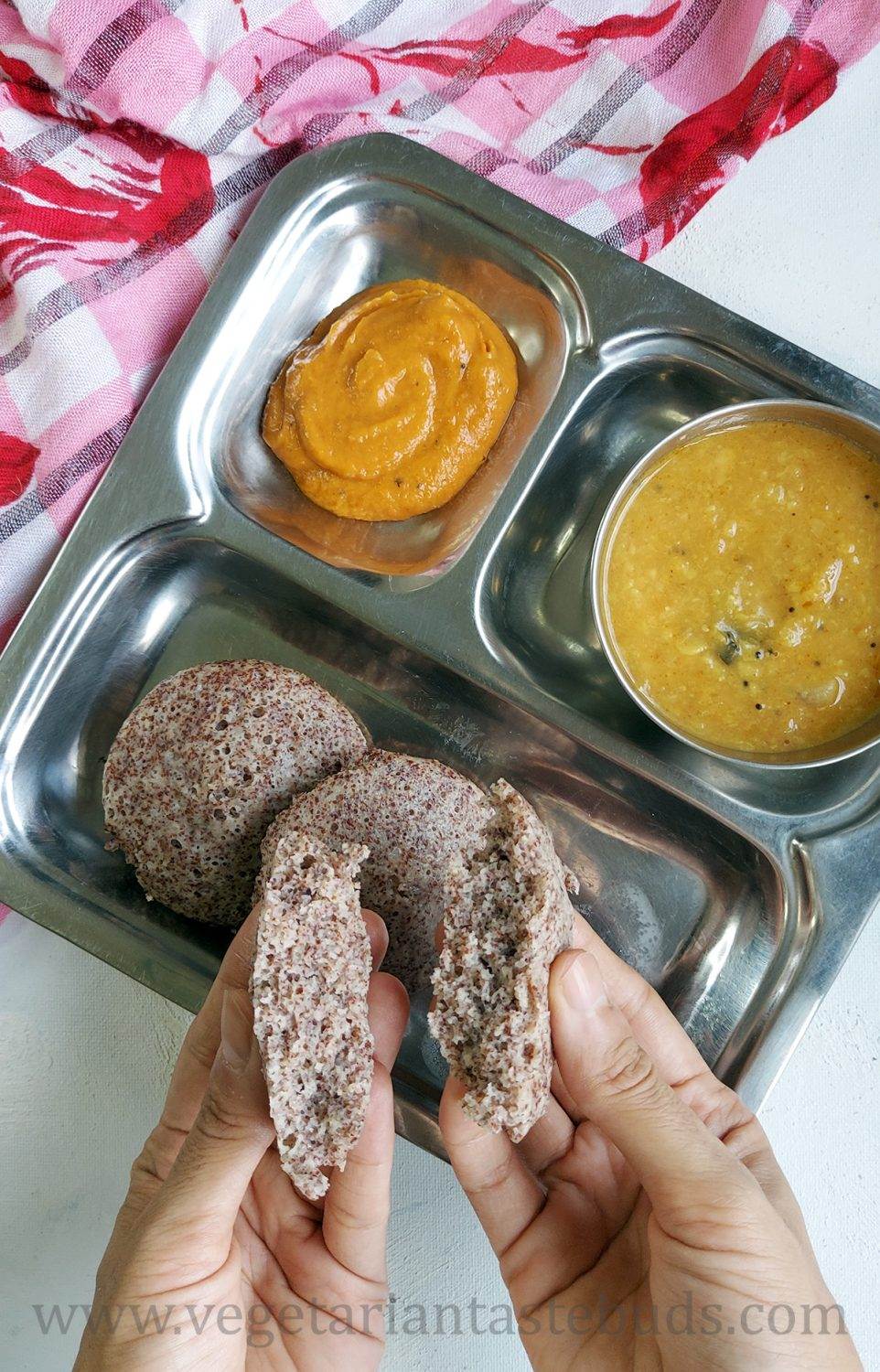
Expert Tips
- The trick is to soak. Proper fermentation arises from proper soaking. So soak the dal, idli rava, and ragi for at least 6 hours.
- The time it takes for the batter to ferment can change based on the weather and the room temperature. In the winter, put the covered batter in a warm place or the oven with the oven light on. It might take less than 8 hours in the summer.
- If you want to use only some batter, add salt to the batter you want to use. You can put the rest of the batter in the fridge.
Serving Suggestions
Serve ragi idli with different chutneys:
You can choose from any of these accompaniments/chutney recipes
More Millet Recipes
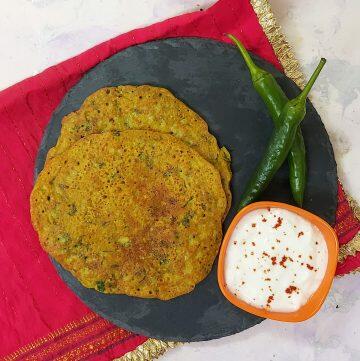

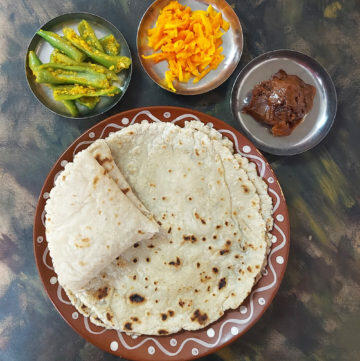
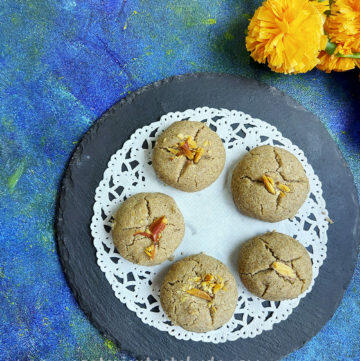
Recipe Card
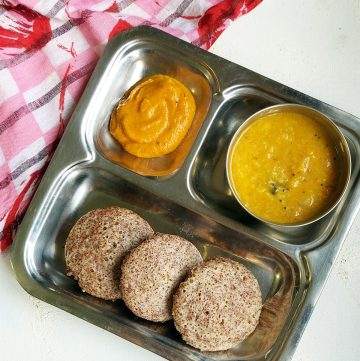
Ragi Idli | Finger Millet Idli
Loved this recipe? Leave a comment below and give us a 5★ rating
Ingredients (1 cup = 240 ml)
- 1 cup idli rava rice rava or cream of rice
- 1 cup whole ragi
- 1/3 cup urad dal
- salt to taste
Instructions
- Take idli rava in a bowl. Rinse it a couple of times. To clean the idli rava, pour nearly double the water, stir and swirl with a hand, and drain the water. The water will become cloudy during the first 2-3 times.
- Then pour water over it so idli rava is covered with water. Soak for 6 hours.
- In a bowl, combine whole ragi and urad dal. Rinse them 4-5 times in water. Then pour water over it till they are completely soaked. Soak for at least 6 hours.
- Drain the excess water from the ragi and urad dal after soaking. Take in a mixer grinder jar. If the quantity is more, you can grind in batches. Add little water while grinding. Do not add more water as idli rava batter will be thin.
- Now take the smooth ragi+dal batter in a big vessel.
- Remove excess water from the soaked idli rava. Squeeze it lightly with your hand and place it in the grinder jar. Blend it. This mixture will not be smooth. It will be slightly coarse. Do not add water while grinding idli rava. If required, add a little urad dal+ragi batter while grinding idli rava.
- Pour the idli rava batter into the vessel containing ragi+urad dal batter. Mix well. Cover and let it ferment for 8-10 hours.
- The time required to ferment the batter may vary depending on the weather and room temperature. In the winter, place the covered batter in the oven with the oven light on or in a warm spot. In summer, it might take less than 8 hours.
- After fermentation, add salt and mix. If you don’t want to use the whole quantity, add salt to the required quantity of batter. You can place the remaining batter in the refrigerator.
- Pour water into a steamer and bring it to a boil. Grease the idli mould with oil, then fill it with batter.
- Place the idli mould in the steamer and put the lid on it. Steam it for 10 minutes over medium heat. After 10 minutes, insert a knife or toothpick into a cooked idli and see if it comes out clean. If it does, the idli is done; if not, steam it for a few more minutes and try again.
- Wait for 1-2 minutes before demoulding. Remove the idlis with the back of a spoon.
- Serve hot with tomato onion chutney.
Video
Notes
- The trick is to soak. Proper fermentation arises from proper soaking. So soak the dal, idli rava, and ragi for at least 6 hours.
- The time it takes for the batter to ferment can change based on the weather and the room temperature. In the winter, put the covered batter in a warm place or the oven with the oven light on. It might take less than 8 hours in the summer.
- If you want to use only some batter, add salt to the batter you want to use. You can put the rest of the batter in the fridge.

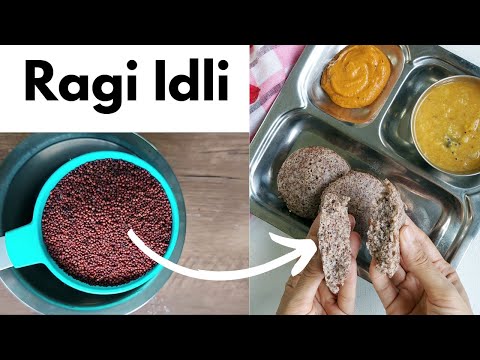
Leave a Reply